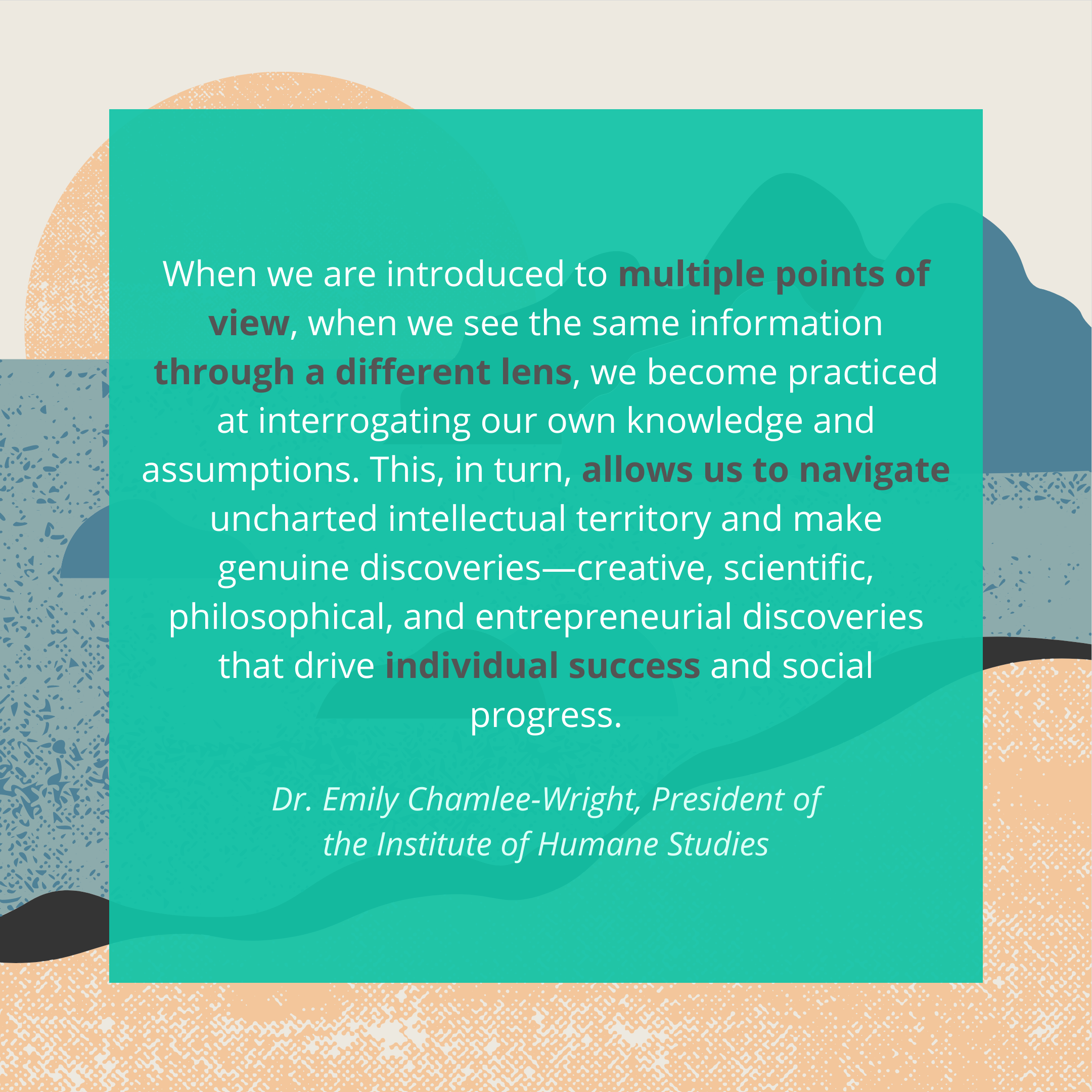Racism and Referrals: Part One
Make Employee Referrals More Equitable
This series was written as a collaboration between Learn to Scale, an organization specializing in employee retention and engagement, and Drafted, the leader in optimizing company networks to leverage referrals. Please note: some perspectives may not reflect each organization's particular beliefs when it comes to referrals but in the spirit of transparency and accountability both parties feel it’s appropriate to share all view points.
Learn to Scale and Drafted have teamed up to help talent acquisition and HR professionals be more nuanced in how they develop their referral programs. With thousands of referrals flowing through the Drafted platform every month, the Drafted team has real data on how referral programs influence diverse hiring practices. Learn to Scale has over a decade of experience engaging and retaining talent, especially with hires from nontraditional educational backgrounds in smaller organizations. Together, a power duo for DEI.
Let's talk about referral programs for hiring: effective or racist?
In one corner, we have evidence that employers who have referral programs tend to hire faster, the referred employees stay longer, and referral programs ultimately cut costs. There's also evidence that employees tend to source higher quality leads and support them when they're there because they have skin in the game.
In the other corner, the evidence that companies tend to source people who look like themselves. There's also evidence that people tend to inhabit racially homogenous circles, which solidifies, rather than dismantles, corporate racial homogeneity. When sourced from new avenues, candidates have less built-in support structures (i.e. an inside person who wants to see you succeed or an employee resource group because they're "the first"), running the risk of shedding outsider talent faster than insider talent.
Where’s the middle ground?
“Preferences, Traditions, and Requirements” (PTR) is the framework you have been looking for to root out inequality in your organization. Originally coined by Dr. R. Roosevelt Thomas Jr. in his article “A Diversity Framework” in Diversity in Organization: New Perspectives for a Changing Workplace, it was a shockingly pragmatic way to hone in on true need-to-haves in a workplace and how to reasonably question the norms and assumptions that build up over the years.
Systemic racism has been calcified in the workplace for too long and thanks to the renewed Black Lives Matter movement, organizations are finally taking actual steps to crack the deep-seated deposits of inequality...but many are struggling to figure out how to go about it. The PTR framework is a pickaxe that can dig out assumptions and categorize them by Preferences (a desire, perhaps by a decisionmaker), Traditions (a desire that historically has been checked off enough times that it feels like a default choice), and Requirements (a necessary condition for competence).
In this series, we’re going to explore the PTR framework in the context of referral programs. Many organizations have some kind of incentive structure to bring in outside talent vouched for by internal employees. It’s a common tactic to recruit talent and research shows that it works. But for many organizations, their referral program that “works” either allows embedded assumptions to linger or- at worst- widens the gap by over incentivizing typical candidates to crowd out qualified non-traditional candidates.
In Part One: explore how preferences embodied in referral programs can be mitigated by a five question litmus test.
In Part Two: dismantle traditions by approaching the job description creation process in a more collaborative manner.
In Part Three: how a harmonized career framework can provide the guidance for discerning candidate requirements.
Part One: Your Referral Preferences Might Be Racist
Tina is sweating the numbers.
As the head of Talent Acquisition, Tina has a quota of new hires she’s trying to close to meet her organization’s aggressive revenue targets. She’s racing to source candidates for a wide range of unrelated roles while trying to keep a standard of quality up for every department...but she can see the writing on the wall.
She’s not going to hit her numbers on her own.
After two glasses of wine and a long talk with her mentor, Tina decided it was time to set up a referral program at her organization - she realized that referrals tend to perform better and will be a great asset to her existing talent pipeline. To do this she needed to leverage the team to help source all the talent that she cannot do on her own. Now the question she needs to answer:
“How do I structure a program that brings in quality diverse talent?”
In Part One, we’re going to look at the Preferences portion of the PTR framework and address ways to scrub preferences out of referral program design.
Many talent acquisition leaders start by designing the same kind of referral program. At its core, the referral program du jour is something simple: a cash bounty for employees who refer a candidate that gets hired and stays at the organization for a period of time. Tried and true. Occam’s Razor of Referrals.
However, this leaves a lot up to employees. 35 % of employees refer to help their friends, 32% do it to help their company, 26% do it to be seen as a valuable colleague. Only 6% do it for money and recognition. Simple referral programs cede control, rather than pursue an organizational strategic priority. You can’t Occam’s Razor systemic racism. While we hope that people are not intentionally racist, it’s worth noting that if you want to instill anti-racist values on an organizational level, it starts by creating a consciously diverse hiring pool.
The Tinas who want to design referral programs that recruit diverse talent need a few more pieces of scaffolding to help guide the larger organization to examine their network with a more critical eye. For this scaffolding to be successful, Tina needs to be more focused on curating how referrals are communicated and endorsed, rather than explicitly saying, “We’re only paying referral bonuses for people of color.” While ethically questionable in some instances if not done right, it is possible to intentionally structure your hiring process to intentionally focus on more diverse hires and those in underrepresented minority groups. Intel strategically increased diverse hires as a part of a multi-pronged effort to increase diverse hires: in the first quarter alone, 17% of senior executives hired were from minority groups, compared to just 6% the previous year. But Intel is big. Intel made it a strategic priority beyond Tina’s office. The Tinas of the world don’t have the same leverage that Intel has to address a systemic problem.
Below are five questions to keep in mind during the referral program design process to find ways to mitigate preferences in the sourcing process:
1. Who describes the job opening to employees and how do they describe “the kind of person they are looking for?”
Context matters. When a senior leader is using culturally appropriate language, promotes inclusivity and respect in their environment, and actively solicits feedback on how they’re perceived, then it sets a model for how employees should behave in kind. When a leader is self-aware, it encourages others to be self-aware. Self-aware teams think twice about their personal assumptions and preferences.
This question has incredible influence on how employees approach their mental selection process. Being intentional with who and how a job opening is presented, you ensure that employee expectations are calibrated to the requirements of the role, rather than the preferences of whomever is explaining their interpretation of the role.
2. How are jobs shared internally?
Intellectual diversity is one of the desired outcomes of a diverse hiring process. Intellectual diversity is a breadth of various perspectives, bodies of knowledge, and methods of thinking that produces superior results - it’s a net-good thing. It is important that the benefits of intellectual diversity are conveyed to employees when asking them to make referrals - changing the way employees think about referrals is 10x more important than changing the program itself. When sharing open positions internally, encourage employees to go beyond the top of mind referrals of a good friend or former colleague and ask them to consider what perspectives the hiring team is currently missing or could benefit from.
Organizations tend to generate this intellectual diversity organically (a sales rep, an engineer, and a marketer walk into a bar…), but can easily be forgotten during the referral process. Intentionally educating adjacent departments about newly opened roles is a way of increasing the likelihood of intellectual diversity as people tap into their niche networks to dredge up non-traditional referral candidates. Besides, LinkedIn’s 2020 Talent Trends identifies the increase in internal hiring as one of the year’s biggest trends and simply communicating job openings increases the likelihood of making an internal hire. With this in mind, it’s important to consider a cadence for sharing newly open positions with your entire organization on a regular basis. An internal ‘job board’ with regular notifications or pings about open roles across all departments will help to generate a stream of cross-departmental referrals.
3. Does your company incentivize for a certain type of referrals?
Money has this curious ability to drive people to rank importance. The assumption is that the more you are paid, the more important you are. The more you pay out in referral bonuses, the more important the role seems. When a referral program is reflective of market conditions, it will breed unintentional consequences.
When deciding how to structure incentives, think beyond the job qualifications to the impact on the organization’s self-image. Typically, specialized roles that are harder to source, higher cost, and more scarce tend to drive higher referral bonuses, so there’s an economic argument for better incentives for competitive roles. However, the qualifications to actually submit a referral - “I think this person would be a great fit for this organization”- is the same for any role. If an employee knows someone great, then they should make a referral...but incentivizing based on job description means that quality candidates that would be great fits for less-incentivized roles are ignored in lieu of the big payout roles. Any time you allow employees to ignore quality candidates is an opportunity that a non-traditional candidate slips through the cracks.
To that point, companies should not discount Under Represented Minority (URM) bonuses as something to try when experimenting with different referral bonus structures. While monetary incentives for specific groups of people can be tricky to navigate, it is worth exploring an extra incentive to bring someone of a diverse or different background into the organization. For inspiration check out these six companies that are doing URM bonuses right.
Some organizations have pursued incentive programs that are not simple cash payouts. Need inspiration to think beyond the dollar?
4. Who are your best internal company brand advocates?
I once worked at an organization where the person staffing the front desk has been there longer than 90% of the rest of the organization. She loved working there and her pleasure in her work was infectious. Kim knew everyone, knew everything, and had influencer power that senior leaders couldn’t ignore. You listened to Kim and you respected her or else there would be hell to pay. When new hires started, they all had a positive memory of Kim.
Internal brand advocates are the kinds of people you want sourcing that next great hire, not only for their ability to close quality candidates but because they see a deeper meaning in bringing in new talent. They’re custodians of a culture that is close to their heart and they will find people who they feel safe staking their influence on. Intentionally educating internal brand advocates on the referral process and strategic hires is a great way of ignoring superficial preferences and honing in on core cultural values.
There’s also a correlation between referrers and increased employee retention: perhaps your best brand advocates are being retained because they give referrals! Consider how to empower more employees to be a brand advocate and- even better- how to get them to be repeat-referrers. Creating a strong connection to the company culture, brand, and referrals will strengthen the relationship the employee has with the company and encourage them to make more referrals.
5. What kind of treatment do you give new hires that were referral hires? What messages does that send to the organization?
Finally, the feedback loop on how referral hires are perceived in the organization feeds the dynamo of future referrals, as well as the transition point of where a Preference starts to be fixed as a Tradition (which we will explore more in Part 2). If a referral program is seen as a necessary evil to meet hiring quota requirements, then referral hires start their first day one step behind. On the other hand, extensively lauding referral hires has an adverse impact on non-referral hires, as well as granting status simply because they knew someone on the inside. The scent of oligarchy follows referral overpromotion.
One balanced approach to appreciating referral hires is individualized praise with publicly shared aggregate data. Encouraging employees to make referrals is critical to the health of your referral system, so privately praising your referrers encourages them to continue. However, just like a leader should be honest and transparent and self-reflective, an organization should be transparent with their sourcing and hiring practices. Accountability to the organization builds trust. Accountability also allows the broader employee base to share feedback on how well the organization is doing in achieving their diversity, equity, and inclusion goals.
So what can Tina do in response to these five preference-dispelling questions?
To make referrals less intimidating, she develops a distilled version for every job description that is a more casual internal description. Tina wants different departments to conceptualize the overall role, even if they aren’t familiar with the actual job requirements.
Tina plans to present a Bounty Board at company town halls. She also leverages an internal job board to not only push Slack notifications to employees at random but highlight referral best practices such as accounting for intellectual diversity. This will ensure that all employees hear about hot jobs as well as provide additional reminders to employees about what makes a good referral. Plus, the randomness in the Slackbot will capture employees that Tina may not personally know as well, opening up a broader referrer pool.
Tina plans to offer a $3000 bonus to employees that refer candidates that ultimately get hired. To encourage fresh engagement and capitalize on market trends, Tina plans to temporarily increase the referral bonus by $1500 quarterly for different department job roles.
She personally plans to meet regularly with her Head of Sales and Head of Engineering, two strong brand advocates that tend to close new hires at a higher rate than other managers. When a hot job is posted, she personally briefs these two advocates and answers their questions. This empowers them to share open positions with their respective teams to encourage repeat-referrals.
For every employee that successfully refers a candidate that gets hired, Tina handwrites a thank you note. The time to make a genuine and unique piece of recognition more than makes up the time sourcing and phone screening.
Conclusion
Referral programs often get a bad reputation for being homogeneous and rightfully so, if not done correctly. Expecting your referral program to do all the hard work for you is simply just not going to cut it if you are intentionally trying to build a diverse company. Step one starts with setting the intention for what you want to achieve and educating your organization appropriately. While it is true that referrals ‘tend to’ perform better, you should not go into the interview with the assumption that the referred candidate is better. A strong referral program should be considered as just another source in your talent pipeline - in other words don’t expect your referral program to do all the hard work for you.
About Drafted
At Drafted, we believe that your company network is your single biggest competitive advantage when it comes to hiring. Our mission is to make it easy for you to leverage your network in the hiring process to find the best candidates. Your network is already powerful, it’s just too much work to make it a priority over the day-to-day of recruiting. Companies that use Drafted see their employee referral numbers go up by 2x, their time to hire drop by 30% and their overall hiring efficiency increase significantly within just a few months.
About Learn to Scale
Learn to Scale was founded with the belief that talent development programs like an engaging on-boarding, a career path that motivates you, and a well-trained great manager should be every employee’s experience, no matter the size of the organization. Companies that want to retain their best talent can partner with Learn to Scale to get the value of an in-house Learning and Development Team at a fraction of the cost of even one regrettable turnover.





